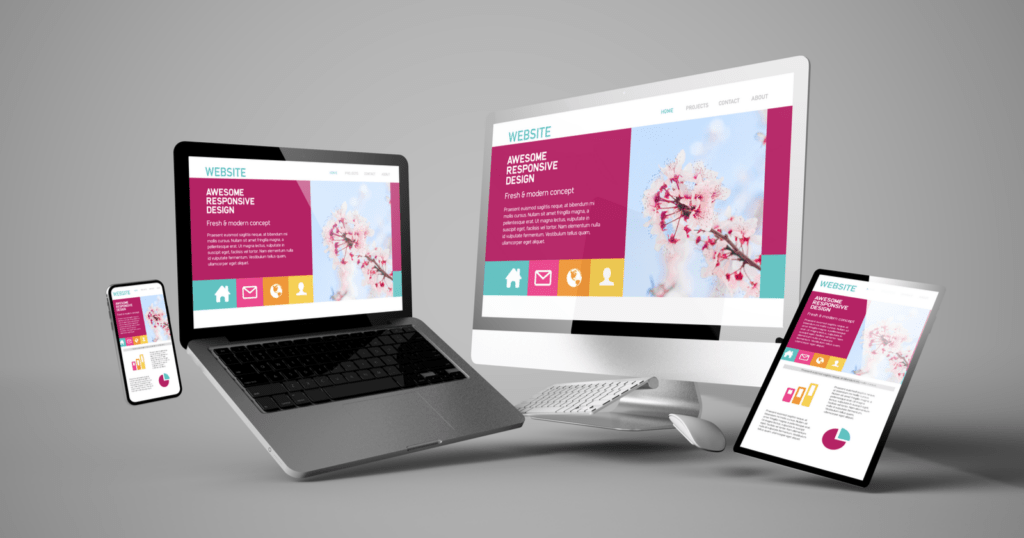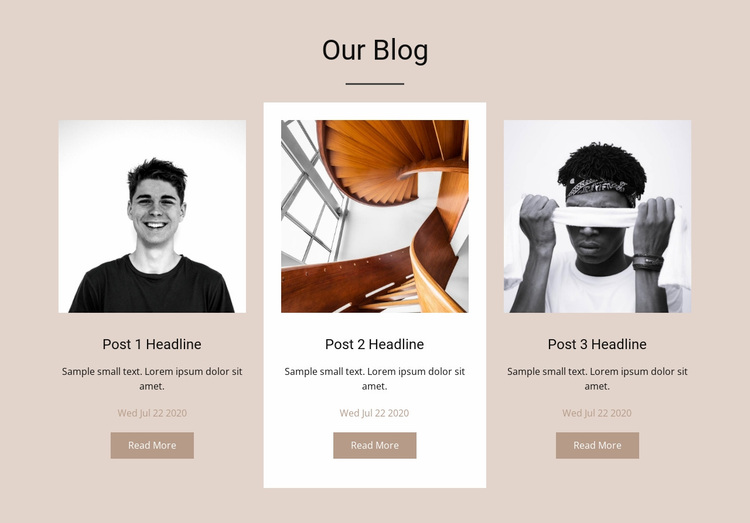Budget-Friendly Website Design Solutions for Medium Businesses
Budget-Friendly Website Design Solutions for Medium Businesses
Blog Article
Top Tips for Developing an Impactful Site Style That Transforms
In today's digital landscape, the relevance of an impactful internet site design can not be overemphasized, specifically when it comes to transforming site visitors right into clients. To achieve this, one need to take into consideration a selection of factors, consisting of recognizing the target market, prioritizing customer experience, and optimizing for mobile systems. The critical use of engaging call-to-actions and a well-defined visual pecking order plays a vital role in leading users through their journey. As we check out these necessary aspects, it comes to be apparent that the success of your website depends upon even more than simply appearance; it requires a thoughtful technique to design and performance.

Understand Your Target Market
Comprehending your target market is basic to reliable website design, as it prepares for creating an appealing individual experience. Determining that your individuals are, including their demographics, preferences, and habits, makes it possible for developers to tailor the web site's material, layout, and performance to satisfy specific requirements.
Carrying out complete marketing research is crucial in this procedure. Studies, interviews, and analytics can offer valuable insights right into user expectations and pain factors. By assembling this data, developers can create customer personalities that stand for different sections of the target market, making certain that design decisions are educated and pertinent.
Furthermore, understanding the target market aids in choosing appropriate style elements such as color pattern, typography, and imagery that resonate with customers. A web site that talks directly to its audience fosters a feeling of link and trust, urging longer check outs and greater conversion prices.
Eventually, a user-centered method to website layout not just enhances customer fulfillment however likewise sustains business goals by driving involvement and loyalty. By focusing on the needs and preferences of the target market, an internet site can effectively offer its purpose and attain preferred outcomes.
Prioritize Individual Experience
To enhance the overall performance of an internet site, focusing on user experience (UX) is essential (Website Design). A properly designed UX makes sure that site visitors can browse the website easily, locate information promptly, and engage with content meaningfully. This leads to raised individual satisfaction and higher conversion prices
Begin by implementing intuitive navigation. Menus needs to be practically structured, allowing users to locate vital locations of the website with very little effort. Consistency in layout elements, such as shade plans and fonts, fosters experience, which is important for maintaining customer involvement.
Additionally, consider the loading rate of your internet site. A hold-up of simply a few secs can bring about substantial drop-offs, as customers are much less likely to wait for a slow-loading page. Improving images and optimizing code can enhance efficiency and keep site visitors.
Moreover, clarity in material presentation is vital. Use succinct, engaging language and damage up text with visuals to enhance readability. By focusing on individual experience, you not only produce a much more satisfying setting for visitors however likewise enhance your brand's reputation. Eventually, a concentrate on UX is a financial investment in the lasting success of your website.
Enhance for Mobile Gadgets
Enhancing for smart phones is vital in today's electronic landscape, where an increasing number of users access read review sites through mobile phones and tablets. A mobile-friendly layout not just enhances individual experience however also plays a substantial duty in boosting online search engine rankings. To achieve this, it is necessary to embrace a responsive design that immediately gets used to different display dimensions and positionings.

Loading rate is an additional critical variable; mobile individuals are typically less patient and expect quick access to details. By focusing on mobile optimization, you make sure that your website remains affordable and properly involves a broader audience.
Usage Engaging Call-to-Actions
A web site's performance often rests on its capacity to direct site visitors toward preferred activities, making compelling call-to-actions (CTAs) essential parts of layout. CTAs offer as the pivotal points that direct individuals to engage with the site, whether that suggests making an acquisition, enrolling in an e-newsletter, or downloading a source.
To produce efficient CTAs, quality is paramount. Usage concise language that clearly communicates the activity you want the individual to take. Expressions such as "Start," "Join Free," or "Shop Now" not just communicate seriousness but also get rid of uncertainty. The placement of CTAs is equally crucial; they ought to be purposefully positioned throughout the page to guarantee they are conveniently noticeable, particularly in high-traffic locations.
In addition, the layout of CTAs must stand out without being obtrusive. Use contrasting colors and clear font styles to guarantee they record attention. Furthermore, take into consideration utilizing directional cues, such as arrowheads or images, to guide users toward these switches. By concentrating on these components, companies can significantly enhance customer involvement, driving conversions and ultimately attaining their website's goals.
Concentrate On Visual Power Structure
Efficient website style relies heavily on a well-structured aesthetic pecking order that guides individuals through web content perfectly. By organizing components in a way that prioritizes information, developers can boost customer experience and promote decision-making. This website link includes making use of dimension, color, comparison, and spacing tactically to draw focus to the most crucial parts of a webpage.
The use of bigger fonts for headings and subheadings establishes a clear distinction between various areas, enabling users to check material easily. Additionally, using different colors for switches and calls-to-action can capture customer interest and motivate interaction. Whitespace is another important part; it stops clutter and allows users to concentrate on essential messages without diversions.
Images and graphics should complement the message while likewise sticking to the established hierarchy, enhancing the total message (Website Design). Consistency in style elements, such as color design and typography, more reinforces the aesthetic hierarchy, making navigating intuitive

Verdict
In conclusion, effective website design necessitates a thorough understanding of the target audience, prioritization of individual experience, and mobile optimization. Eventually, a well-executed website design offers as a vital element in driving user activities and attaining organization objectives.
Report this page